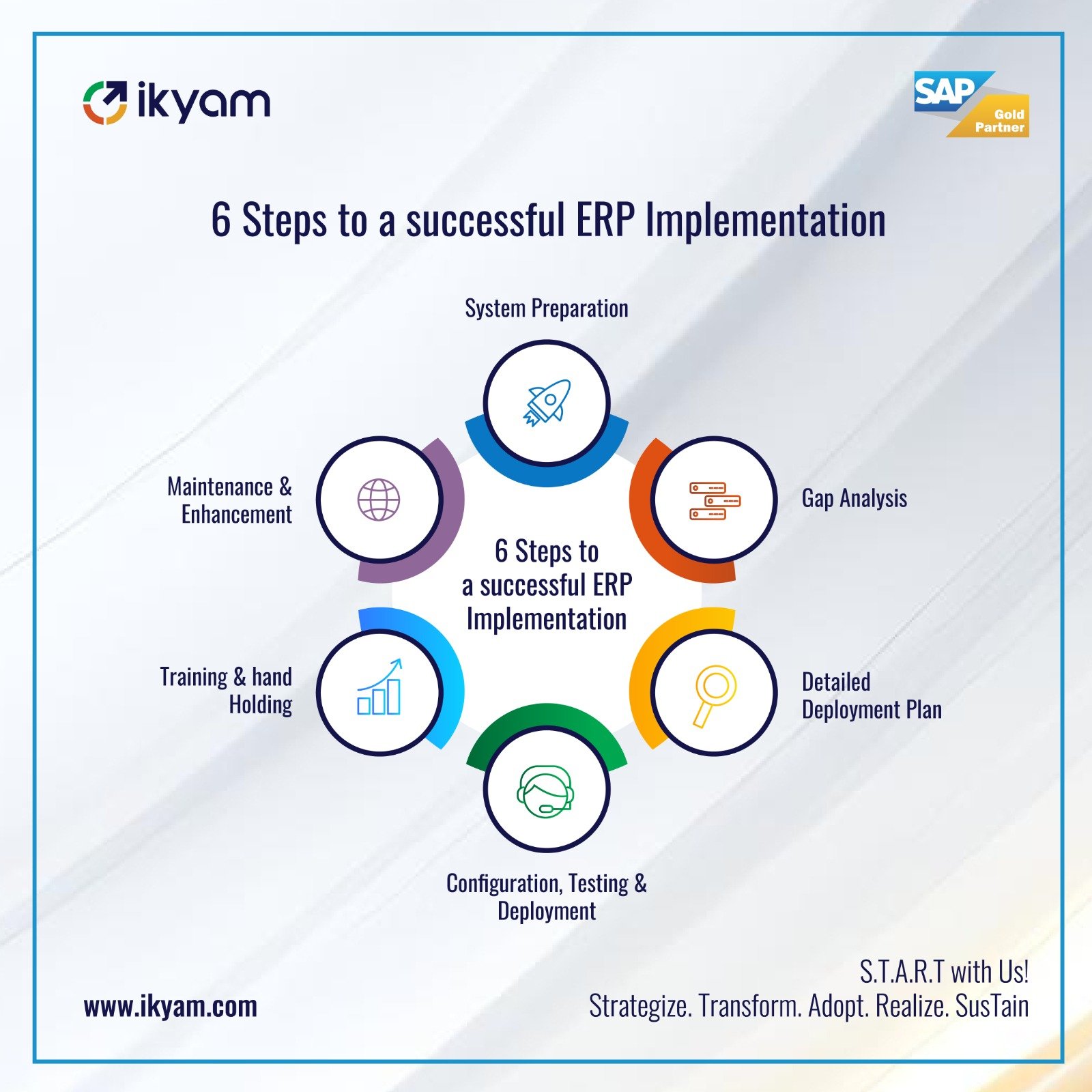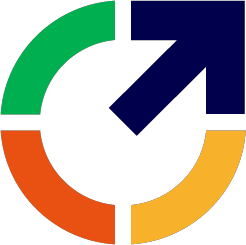Introduction
The global ERP software market is expected to reach $78.4 billion by 2026. In a survey of IT decision-makers, 53% said ERP was an investment priority, in addition to CRM. As evident from the statistics, Enterprise Resource Planning (ERP) systems in today’s business landscape have become crucial for enhancing operational efficiency and productivity. However, despite their immense potential, ERP projects frequently face substantial obstacles that lead to failure. Let’s delve into the key factors contributing to its project setbacks and uncover effective approaches to minimize these risks.
6 Steps to a Successful ERP Implementation
Inadequate Planning and Requirements Analysis
Insufficient planning and inadequate requirements analysis emerge as major contributors to the failure of ERP projects. Hastily proceeding with ERP implementation without a comprehensive grasp of business requirements, processes, and user expectations can result in misaligned solutions and low system adoption rates.
Solution: Prioritizing comprehensive planning, including thorough evaluations of existing processes, organizational objectives, and valuable stakeholder input, is imperative for project success.
Lack of Executive Sponsorship and Leadership
In the absence of top-level support and active involvement, projects frequently face resource constraints, insufficient authority, and decision-making challenges. This leadership deficiency can lead to project delays, scope expansion beyond control, and a general lack of organizational commitment, ultimately resulting in project failure.
Solution: ERP projects require strong executive sponsorship and leadership to align with business objectives.
Inadequate Change Management
The implementation of ERP systems brings about substantial transformations in an organization’s processes, workflows, and employee roles. Inadequate attention to change management can lead to resistance, fear, and low user adoption rates.
Solution: Organizations need to prioritize change management initiatives, encompassing comprehensive communication, training, and continuous support. By doing so, they can facilitate a seamless transition and empower employees to embrace the new system confidently.
Poor Data Management and Data Quality
Accurate data management is essential for the success of any ERP system, as it forms the foundation of its operations. Subpar data management practices can jeopardize the project’s outcome, resulting in erroneous reporting, inefficient processes, and compromised decision-making.
Solution: Investing in data cleansing, validation, and migration efforts can uphold data integrity and fully harness the system’s effectiveness. Prioritizing these measures ensures a strong data backbone and enhances overall project performance.
Scope Creep and Unrealistic Expectations
Scope creep poses a significant challenge to ERP projects as it entails the continuous expansion of project boundaries beyond the original plan. Unregulated alterations in requirements, customization requests, and additions frequently result in budget overruns, prolonged timelines, and ultimately, project failure.
Solution: By setting realistic expectations, implementing change control mechanisms, and closely monitoring project scope, organizations can effectively mitigate this risk and ensure the project stays on track with its intended objectives.
Insufficient Training and User Involvement
Successful adoption of ERP systems can be impeded by insufficient training and limited user involvement. Engaging end-users actively during the project is crucial, enabling them to provide feedback, participate in testing, and receive comprehensive training. Neglecting these aspects can lead to resistance, low system utilization, and an inability to fully leverage the system’s potential.
Solution: To ensure successful adoption, organizations must prioritize user engagement, training, and continuous involvement throughout the implementation process.
Vendor Selection and Project Governance
The success of a project relies heavily on selecting the appropriate ERP vendor and implementing effective project governance mechanisms. Insufficient due diligence during the vendor selection phase can lead to the adoption of an incompatible solution or partnering with a vendor lacking the required expertise and support capabilities. Moreover, the absence of proper project governance can result in inadequate communication, insufficient risk management, and a lack of accountability, all contributing factors to project failure.
Solution: To ensure project success, organizations must prioritize thorough vendor evaluation and establish robust project governance structures.
Conclusion
ERP project failures can be costly and detrimental to organizations, but they can be avoided or mitigated through meticulous planning, competent leadership, efficient change management, and active user engagement. By addressing these challenges head-on, organizations can enhance their chances of success in ERP implementation. Ikyam’s SAP ERP solutions help you overcome these challenges with ease.
Schedule a demo to know more: https://ikyam.com/contact-us/



